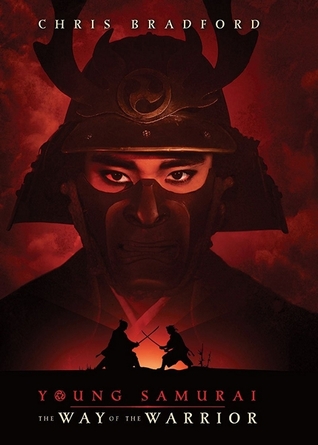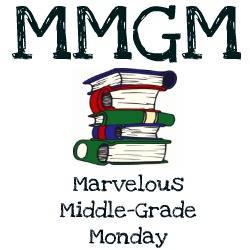Before launching into my MMGM spotlight for today I have to put in a plug for author and writing coach David Farland. Â He’s been on my radar for an embarrassingly long time, but I recently followed an impulse and dove into one of this books on writing. Â It’s called Million Dollar Outlines, but I’m finding it goes into much more depth than your usual writing book on outlines, such as covering emotional beats, and understanding the needs of your target audience. Â As a result of how fab this book is, I’ve signed up to attend his two day seminar Write That Novel 2.0, which will be in Indianapolis in a month or so here–say hi if you see me there!
Okay, on to my spotlight on Chris Bradford’s middle grade novel The Way of the Warrior…which I can give my almost one hundred percent approval! lol
I found it a thoroughly enjoyable tale, and sufficiently gripping to keep me up nights reading.  It’s also one of those stories parents and teachers love, ’cause kids don’t notice that they’re being fed a bit of history (and a culture that doesn’t get featured enough!) while they enjoy an adventure.  However, there were a couple points that tripped me up.  The first was that the book begins in the pov of a boy who is immediately killed.  Then it shifts to the pov we stay in throughout the rest the novel.  And, while I can understand why the author made that choice, well, I liked the first pov better.  So, I found the shift challenging and really only hung in there initially because my kids wanted to know if the book was any good and I wanted to be able to give them a fair answer.  However, the new pov grows on you and in the end left me satisfied.
The second issue was that the main pov character, twelve-year-old Jack Fletcher, is really a modern kid who happens to be living in the 1600s. Â His sensibilities, reaction to a new and unfamiliar culture, perspective on race, and sense of what is fair and right–all are thoroughly modern. Â In contrast, the Japanese kids around him are biased–you might say racist–against the Gaijin in their midst, and while some are welcoming, others won’t respect him no matter what he does and treat him like he’s less than them just because he’s not Japanese. Â As a result of this skewed perspective–presenting a British kid from the 1600s as tolerant and respectful of all people, ready to see them as his equals–the Japanese can come across as closed-minded and prejudiced. Â In reality, pretty much all people of that time period would be considered prejudiced by modern standards, and the British were certainly no exception.
So, were I to share this book with a class or young readers, I would feel compelled to point out the inherent pov bias and resulting incongruity. Â However, that would of itself be a valuable discussion, and isn’t a reason not to share the book. Â It would also open up a great discussion as to why a writer might have chosen to give his main character modern sensibilities, and how the reader might have responded to a character whose perspective was historically accurate of the time. Â And in the end, most kids will still have their perspective broadened by reading the novel, and the Japanese culture and Samurai are by no means portrayed in an unsympathetic light.
Let’s see what Apricot-kitty has to say:
 “Aren’t you supposed to be a martial artist? Â How come I’ve never seen you do that butterfly move? Â And why is it called a butterfly move, instead of something fierce like Flying Kitty? Â Butterflies aren’t so great–I’ve caught them. Â They taste like fuzzy cheetos.”
“Aren’t you supposed to be a martial artist? Â How come I’ve never seen you do that butterfly move? Â And why is it called a butterfly move, instead of something fierce like Flying Kitty? Â Butterflies aren’t so great–I’ve caught them. Â They taste like fuzzy cheetos.”
Eh, yes, have I mentioned that Apricot-kitty is quite the huntress? Â She’s thankfully most interested in mice, but occasionally a dragonfly or butterfly falls to her paw. Â And it is true that as a martial artist (with a history degree!) I was probably reading more critically than your average reader. Â But, the martial arts scenes hold up and were very well-written, I thought! Â I loved the focus on the basics, and that while there was a certain rather fantastic move pulled out at the end, learning it was earned and took months, not days or weeks, of concentrated effort to get down. Â Much more realistic than your average kick-it-out movie!
For more Marvelous Middle-Grade Monday spotlights, reviews, interviews and giveaways, stop by the blog of our lovely host, Shannon Messenger! Â And Happy Reading!


Greg Pattridge
Suzanne Warr
Reader Noir
Joanne Fritz
Suzanne Warr
Jenni Enzor
Suzanne